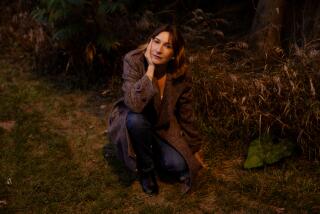How to tell the story? These authors give us a relationship through auction items, lives in Pakistan and depression recovery
Important Artifacts and Personal Property From the Collection of Lenore Doolan and Harold Morris, Including Books, Street Fashion, and Jewelry
Leanne Shapton
Sarah Crichton Books/Farrar, Straus & Giroux: 136 pp., $18 paper
Brilliant. It is quite simply impossible to believe this has never been done before: a catalog for the auction of possessions that tells the story of a (fictional) relationship, from start to finish (and yet, there is hope). The first items include the invitation to the Halloween party where Doolan and Morris met, and the napkin on which Morris wrote Doolan’s e-mail address at the New York Times (the author, heretofore referred to as “the genius,” is an art director at the paper).
There are photos: of Doolan trying on outfits for their first date; of Morris (who is a photographer) waiting outside Doolan’s West Village apartment and of Doolan waiting outside Morris’ Brooklyn apartment; of Morris carrying a watermelon and an umbrella (and, sure enough, of the umbrella). From them, we piece together our protagonists.
Books with marginalia -- he reads Richard Ford’s “The Sportswriter,” she reads Henry James and Jane Bowles. Lot 1204, “Duplicate paperbacks,” poignantly suggests some of the titles they both owned: “This Side of Paradise” by F. Scott Fitzgerald, “The White Hotel” by D.M. Thomas, and others. Lot 1199, a hotel breakfast menu with a note from Morris: “Honey, I Love You, XXXXXXXXXXX” (expected bid range, $10-$20). She is definitely in love; he is a little distant. He travels a lot for work -- there are postcards from all over the world, and finally India, where he decides to stay, and stay, and stay to figure things out.
Notes are placed in books -- Lot 1148 is an apology from Morris for missing a dinner, placed in a book of stories by Alice Munro.
Doolan is a vintage clothing maven -- hats and dresses and striped clothing; Lot 1284, 18 bras. Sometimes the clothes are accompanied by notes describing the clothes, as in Lot 1070: “Missing you, and thinking of you every time I see someone wearing stripes,” from Morris. There is some little-used outdoor equipment, snowshoes and skates. Morris misses one too many events. Lenore thinks she’s pregnant. He needs time to think. I don’t know about you, but personally, I think they’ll get back together. I’d buy the whole darn estate if I could afford it.
In Other Rooms,
Other Wonders
Stories
Daniyal Mueenuddin
W.W. Norton: 248 pp., $23.95
We are so used to thinking of Pakistan as a country riven by strife that we can barely imagine normal life -- the passing of generations, family rebellions and strategies for coping with everyday crises. These linked stories take us into a Pakistan we hardly ever see in print -- the old aristocracy, the landowners and gentlemen-farmers, the farm managers and servants and peasants, the black sheep of the extended family, the passing of the old world, bit by bit.
The stories are set in Lahore and on the family farm in the southern Punjab region. Linked stories allow the reader to create the elaborate kinship chart from the ground up -- from Nawab the electrician to K.K. Harouni, the family patriarch. The family spreads out around the world; the wealth, too, dissolves -- the older generations place a greater value on the relationships that keep the family farm running. Daniyal Mueenuddin spent the early part of his life in Lahore and his vacations on the family farm in the southern Punjab region. He was sent to school in the U.S., worked in a Manhattan law firm and returned to Pakistan to run the farm after his father died. It’s the people he remembers here, in fiction, the servant who raised him, the manager of the farm. “It’s a little dying world,” thinks a young woman paying a visit, “this household, these servants, the old man at the center.”
A Hell of Mercy
A Meditation on Depression and the Dark Night of the Soul
Tim Farrington
HarperOne: 128 pp., $18.95
Books about depression usually end up voting for or (subtly or not-so-subtly) against antidepressants. This book is a vote for. Tim Farrington was first treated for depression when he was 17. It is also the year he discovers Zen Buddhism. “I’m not a scholar,” he writes, explaining how much St. John of the Cross and his book “Ascent of Mount Carmel” helped him. “I’m more like a veteran . . . just one more guy with some stories from the front.”
After three months on Effexor, he is able to finish a novel and live a normal life. He comes to see his depression as a way of purging his soul of the selfish ego, bringing that soul to silence and an awareness of its own nothingness.
More to Read
The biggest entertainment stories
Get our big stories about Hollywood, film, television, music, arts, culture and more right in your inbox as soon as they publish.
You may occasionally receive promotional content from the Los Angeles Times.






